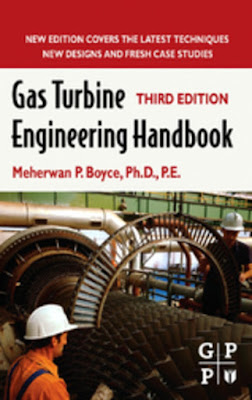Heat Transfer - Objective questions
Unit of thermal conductivity in M.K.S.
units is
(a) kcal/kg m2 °C
(b) kcal-m/hr m2 °C
(c) kcal/hr m2 °C
(d) kcal-m/hr °C
(e) kcal-m/m2 °C.
Ans: b
Unit of thermal conductivity in S.I. units
is
(a) J/m2 sec
(b) J/m °K sec
(c) W/m °K
(d) (a) and (c) above
(e) (b) and (c) above.
Ans: e
Thermal conductivity of solid metals with rise in temperature normally
(a)
increases
(b)
decreases
(c) remains constant
(d) may increase or decrease depending on
temperature
(e) unpredictable.
Ans: b
Thermal conductivity of non-metallic amorphous solids with decrease in temperature
(a) increases
(b)
decreases
(c) remains constant
(d) may increase or decrease depending on
temperature
(e) unpredictable.
Ans: b
Heat transfer takes place as per -
(a) zeroth law of thermodynamics
(b) first law of thermodynamic
(c) second law of the thermodynamics
(d) Kirchoff's law (e) Stefan's law.
Ans: c
When heat is transferred from one particle of hot body to another by
actual motion of the heated particles, it is referred to as heat transfer
by
(a)
conduction
(b)
convection
(c)
radiation
(d) conduction and convection
(e) convection and radiation.
Ans:
a
The insulation ability of an insulator
with the presence of moisture would
(a) increase
(b) decrease
(c) remain unaffected
(d) may increase/decrease depending
on temperature and thickness of insulation
(e) none of the above.
Ans:
b
When heat is Transferred by molecular
collision, it is referred to as heat transfer by
(a) conduction
(b) convection
(c) radiation
(d) scattering
(e) convection and radiation.
Ans: b
Heat transfer in liquid and gases takes
place by
(a)
conduction
(b)
convection
(c)
radiation
(d) conduction and convection
(e) convection and radiation.
Ans: b
Which of the following is the case of
heat transfer by radiation
(a) blast furnace
(b) heating of building
(c) cooling of parts in furnace
(d) heat received by a person from fireplace
(e) all of the above.
Ans: d
Heat is closely related with
(a) liquids
(b) energy
(c) temperature
(d) entropy
(e) enthalpy.
Ans: c
Pick up the wrong case. Heat flowing from
one side to other depends directly on
(a) face area
(b) time
(c) thickness
(d) temperature difference
(e) thermal conductivity.
Ans C
Metals are good conductors of heat
because
(a) their atoms collide frequently
(b) their atoms-are relatively far apart
(c) they contain free electrons
(d) they have high density
(e) all of the above.
Ans: a
Which of the following is a case of
steady state heat transfer
(a) I.C. engine
(b) air preheaters
(c) heating of building in winter
(d) all of the above
(e) none of the above.
Ans: e
Total heat is the heat required to
(a) change vapour into liquid
(b) change liquid into vapour
(c) increase the temperature of a liquid or
vapour
(d) convert water into steam and superheat it
(e) convert saturated steam into dry steam.
Ans: d
Cork is a good insulator because it has
(a) free electrons
(b) atoms colliding frequency
(c) low density
(d)
porous body
(e)
all of the above.
Ans: d
Thermal conductivity of water in general
with rise in temperature
(a) increases
(b) decreases
(c) remains constant
(d)
may increase or decrease depending on temperature
(e) none of the above.
Ans: d
Thermal conductivity of water at 20°C is
of the order of
(a) 0.1
(b) 0.23
(c) 0.42
(d) 0.51
(e) 0.64.
Ans:
d
Temperature of steam at around 540°C can
be measured by
(a) thermometer
(b) radiatiouv pyrometer
(c) thermistor
(d) thermocouple
(e) thermopile.
Ans: d
Thermal conductivity of air at room
temperature in kcal/m hr °C is of the order of
(a) 0.002
(b) 0.02
(c) 0.01
(d) 0.1
(e) 0.5.
Ans: b
The time constant of a thermocouple is
(a) the
time taken to
attain the final temperature to be measured
(b) the time taken to attain 50% of the value
of initial temperature difference
(c) the time taken to attain 63.2% of the
value of initial temperature difference
(d) determined by the time taken to reach
100°C from 0°C
(e) none of the above.
Ans:
c
Thermal conductivity of air with rise in
temperature
(a)
increases
(b)
decreases
(c) remains constant
(d) may increase or decrease depending on
temperature
(e)
none of the above.
Ans: a
Heat flows from one body to other when
they have
(a) different heat contents
(b) different specific heat
(c) different atomic structure
(d) different temperatures
(e) none of the above.
Ans:
d
In heat transfer, conductance equals
conductivity (kcal/hr/sqm/°C/cm) divided by
(a)
hr (time)
(b)
sqm (area)
(c) °C (temperature)
(d) cm (thickness)
(e)
kcal (heat).
Ans: d
The amount of heat flow through a body by
conduction is
(a) directly proportional to the surface area
of the body
(b) directly proportional to the temperature
difference on the two faces of the body
(c) dependent upon the material of the body
(d) inversely proportional to the thickness
of the body
(e) all of the above.
Ans: e
Which of the following has least value of
conductivity
(a) glass
(b)
water
(c) plastic
(d) rubber
(e) air.
Ans:
e
Which of the following is expected to have highest thermal conductivity
(a) steam
(b) solid ice
(c) melting ice
(d) water
(e) boiling water.
Ans: b
Which of the following has maximum value
of thermal conductivity
(a) aluminium
(b) steel
(c) brass
(d) copper
(e) lead.
Ans:
a
Moisture would find its way into
insulation by vapour pressure unless it is prevented by
(a) high thickness of insulation
(b) high vapour pressure
(c) less thermal conductivity insulator
(d) a vapour seal
(e)
all of the above.
Ans: d
Heat is transferred by all three modes of
transfer, viz, conduction, convection and radiation in
(a)
electric heater
(b)
steam condenser
(c) melting of ice
(d) refrigerator condenser coils
(e) boiler.
Ans: e
Heat transfer by radiation mainly depends
upon
(a) its temperature
(b) nature of the body
(c) kind and extent of its surface
(d) all of the above
(e) none of the above.
Ans:
d
Thermal diffusivity is
(a) a dimensionless parameter
(b) function of temperature
(c) used as mathematical model
(d) a physical property of the material
(e) useful in case of heat transfer by
radiation.
Ans:
d
Thermal diffusivity of a substance is .
(a) proportional of thermal
conductivity
(b) inversely proportional to k
(c) proportional to (k)
(d) inversely proportional to k2
(e) none of the above.
Ans: a
Unit of thermal diffusivity is
(a) m2/hr
(b) m2/hr°C
(c) kcal/m2 hr
(d) kcal/m.hr°C
(e) kcal/m2 hr°C.
Ans: a
Thermal conductivity of wood depends on
(a) moisture
(b) density
(c) temperature
(d) all of the above
(e) none of the above.
Ans: d
In convection heat transfer from hot flue
gases to water tube, even though flow may be turbulent, a
laminar flow region (boundary layer of film)
exists close to the tube. The heat transfer through this film
takes place by
(a)
convection
b)
radiation
(c) conduction
(d) both convection and conduction
(e) none of the above.
Ans:
c



Comments
Post a Comment